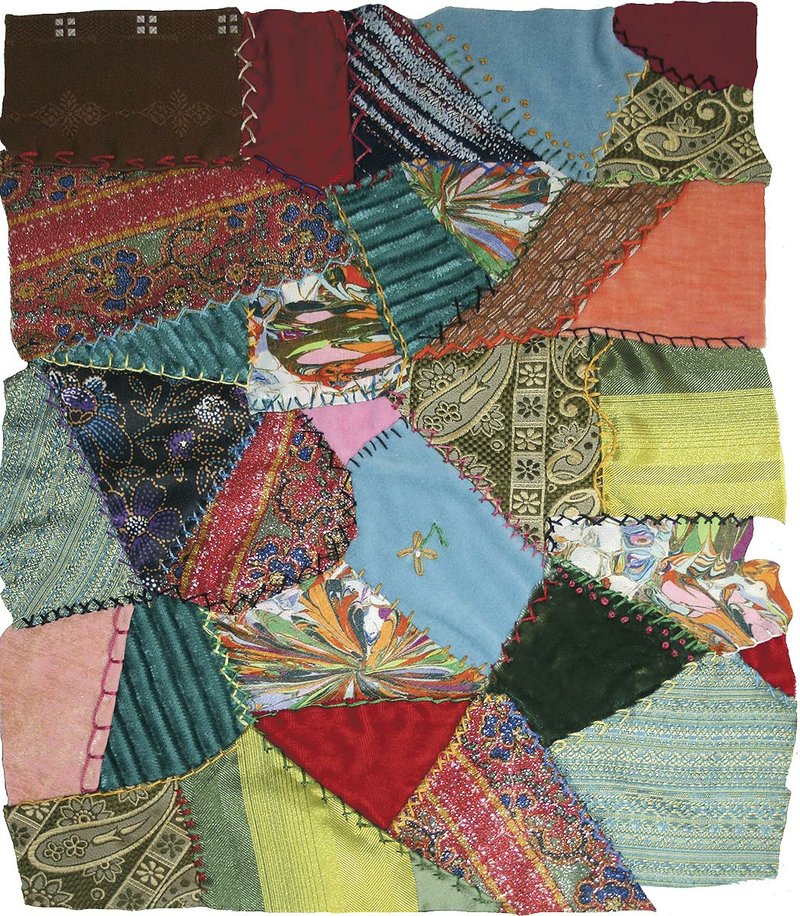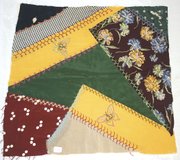Don't be fooled. Crazy quilts -- in spite of their mismatched scraps of fabric and random appearance -- were rarely haphazard. Neither were they a pioneer homemaker's solution to cold winters on the prairie.
Instead, as a new exhibit opening at the Rogers Historical Museum illustrates, crazy quilts were the height of fashion at the turn of the 20th century. As such, they were showpieces of the Victorian era, "a way for ladies to showcase their sewing skills as well as their wealth," says Terrilyn Wendling, assistant director of the museum.
FAQ
‘Crazy Quilts’
WHAT — Ten quilts from the permanent collection
WHEN — Saturday through July 10; hours are 10 a.m.-5 p.m. Monday through Saturday & 1-5 p.m. Sunday
WHERE — Rogers Historical Museum, 322 S. Second St.
COST — Free
INFO — 621-1154
"Fancy quilting enjoyed great popularity in the late 1800s, and the crazy quilt, lavishly embroidered and usually made of silks, satins and velvets, was the epitome of the fancy quilt," she explains. "Crazy quilts ... were not usually made to be used as bedcovers. Instead, crazy quilts often were used as sofa throws or table and piano covers. In comparison to standard quilts, crazy quilts are far more likely to use exotic pieces of fabric, such as velvet, satin, tulle or silk, and embellishments such as buttons, lace, ribbons, beads or embroidery." Even embroidered patches -- similar to iron-ons of a much later time -- were sold to be added by ladies who didn't have the skills to create their own.
Beverly Gordon, a professor emerita of the University of Wisconsin-Madison, lecturer and author of "The Fiber of Our Lives: Why Textiles Matter," says "the history of quilts overall has a very large dose of myth in it," as does the history of crazy quilts, sometimes said to have been originated by a patient at a Massachusetts poor house. It is, in general, true that the "more irregular, asymmetrical style caught on" after the 1876 Philadelphia Centennial Exhibition, and "crazy quilts grew out of there," Gordon says.
"The displays shown at the Japanese pavilion of silk-screened work and Japanese pottery with a cracked-glaze inspired the American audiences," Wendling agrees. "Similar aesthetics began to show up in crazy quilts, including unique patterns and stitching that resembled spider webs and fans.
"Crazy quilting rapidly became a national fashion among urban, upper-class women, who used the wide variety of fabrics that the newly industrialized 19th century textile industry offered to piece together single quilts from hundreds of different fabrics," she continues.
Gordon says crazy quilts offered not only "exuberant aesthetic expression" but also reflected the mood in a country on the brink of great societal change and even greater prosperity.
"It was a time of a great deal of optimism for America, great growth and a sense of coming in to our Manifest Destiny," Gordon says. "Americans had a sense of confidence in the future. That's my take, but I think it's accurate."
Also, she says, it was a period of seeking escape in a simpler time -- in "fairyland," as evidenced by the popularity of books such as "Alice in Wonderland" and "Peter Pan."
"What really mattered on a crazy quilt was a feeling -- an evocation of a happy, dreamy place, an enchanted 'fairyland' or Never-Never-land that existed far away, apart from any painful realities or practicalities," Gordon told the International Quilt Study Center & Museum in Lincoln, Neb. Making a crazy quilt was one way women could temporarily escape from the unsettling, rapid change that accompanied industrialization, urbanization and immigration at the end of the 19th century.
"Nobody sat down to make a crazy quilt thinking about any of that," Gordon adds with a chuckle. "It was really an expression of the love of color and pattern and texture and the chance to explore it. It was pop culture."
NAN What's Up on 02/12/2016


